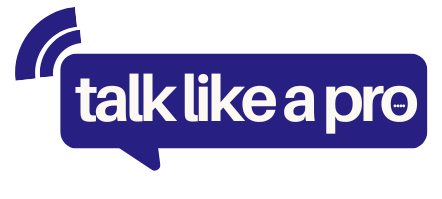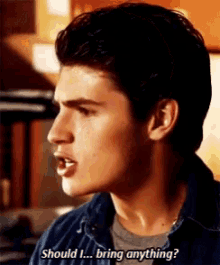If you’re anything like me, the phrase “See you soon” can sometimes leave you scratching your head, unsure of how to craft the perfect response. I mean, it’s just three little words, right? Yet somehow, they have the power to make us pause and ponder the many shades of formality and the plethora of contexts in which we might need to reply.
First, let’s acknowledge the elephant in the room: “See you soon” is a classic, albeit somewhat passive, sign-off that can stem from either genuine intent or polite courtesy. And here we are, wrestling with the idea of how to respond—whether texting a colleague, emailing a boss, or even face-to-face with an acquaintance. So buckle up, because we’re diving deep into some truly impressive ways to reply to “See you soon” that can leave you looking polished and professional!
Warm Responses for Professional Settings
“Likewise, looking forward to it.”
A tried and true classic, this response is great for business meetings or follow-ups with colleagues. It conveys enthusiasm and mutual respect without crossing any formal boundaries.
Example Replies:
- “Likewise, looking forward to discussing the project further.”
- “Likewise, looking forward to our next meetup.”
- “Likewise, excited to catch up soon.”
“Thank you, I appreciate the opportunity.”
When higher-ups or important clients tell you they will see you soon, this reply can be your best friend. It exudes gratitude and professionalism.
Example Replies:
- “Thank you, I appreciate the opportunity.”
- “Thank you, I’m looking forward to contributing.”
- “Thank you, it’s always a pleasure connecting with you.”
Polite Responses With a Hint of Formality
“Until then.”
Concise and polished, this response works well in a myriad of contexts—from work emails to semi-formal events. It’s neutral, yet indicative of anticipation.
Example Replies:
- “Until then, take care.”
- “Until then, I’ll prepare the materials.”
- “Until then, stay well.”
“It’ll be great to catch up.”
Perfect for situations where you have a semi-formal rapport—think networking events or academic circles. It’s positive and enthusiastic without being too casual.
Example Replies:
- “It’ll be great to catch up at the conference.”
- “It’ll be great to discuss the research soon.”
- “It’ll be great to reconnect.”
Professional Yet Approachable Responses
“Sure thing, see you soon.”
This response strikes a balance between formality and a touch of warmth. You’re not buddies, but you’re not robots either.
Example Replies:
- “Sure thing, see you at the meeting.”
- “Sure thing, see you at the event.”
- “Sure thing, see you next week.”
“Absolutely, see you soon!”
A bit more animated, this response is great when you want to demonstrate energy and eagerness without eroding professionalism.
Example Replies:
- “Absolutely, see you at the presentation.”
- “Absolutely, see you in class.”
- “Absolutely, see you at the workshop.”
Encouraging Replies for Team Dynamics
“Yes, let’s make it a great one.”
This works wonderfully for internal meetings or team functions. It’s motivational and reflects a collaborative spirit.
Example Replies:
- “Yes, let’s make it a great presentation.”
- “Yes, let’s make it a great discussion.”
- “Yes, let’s make it a productive session.”
“Let’s ensure we achieve our goals.”
When you’re the one driving a project forward, use this reply to align everyone’s focus and enthusiasm.
Example Replies:
- “Let’s ensure we achieve our goals in the meeting.”
- “Let’s ensure we achieve our targets this quarter.”
- “Let’s ensure we achieve our milestones.”
Sincere Yet Subtle Replies
“Will do, see you soon.”
Resonating with subtlety and sincerity, this reply can be suitable for professional contacts and acquaintances.
Example Replies:
- “Will do, see you at the seminar.”
- “Will do, see you next week.”
- “Will do, see you then.”
“Looking forward to it.”
Universally applicable, this response shows eagerness in a polite manner.
Example Replies:
- “Looking forward to our discussion.”
- “Looking forward to collaborating.”
- “Looking forward to our catch-up.”
Efficient Responses for Fast-Paced Environments
“Noted, see you soon.”
This is your go-to reply when time is of the essence and you need to convey acknowledgment plus anticipation.
Example Replies:
- “Noted, see you at the review.”
- “Noted, see you at the next meeting.”
- “Noted, see you at the function.”
“Got it, till then.”
Short and sweet, this response indicates you’ve received the message loud and clear, and you’re prepared for what’s next.
Example Replies:
- “Got it, till next week.”
- “Got it, till the meeting.”
- “Got it, till our next call.”
Creative Yet Appropriate Responses
“Absolutely, can’t wait to discuss.”
Inject a smidge of personality and excitement into your response while maintaining professionalism.
Example Replies:
- “Absolutely, can’t wait to discuss the next steps.”
- “Absolutely, can’t wait to brainstorm with you.”
- “Absolutely, can’t wait to hear your thoughts.”
“Excited to see what we accomplish.”
Forward-thinking and inspiring, this response is great for energizing the team or impressing stakeholders with your proactive mindset.
Example Replies:
- “Excited to see what we accomplish at the workshop.”
- “Excited to see what we achieve in our next session.”
- “Excited to see what we create together.”
Balancing Friendliness and Formality
“Sure thing, until we meet.”
A genial yet formal way to wrap up your conversation, fitting for nearly any professional engagement.
Example Replies:
- “Sure thing, until we meet at the conference.”
- “Sure thing, until we meet next time.”
- “Sure thing, until the final edit.”
“That sounds good, see you soon.”
Use this when you want to blend warmth with formality effortlessly.
Example Replies:
- “That sounds good, see you at the review.”
- “That sounds good, see you at the presentation.”
- “That sounds good, see you at our next meet-up.”
Empowering the Polished Finale
“Absolutely, let’s make it count.”
When you want to leave a lasting impression that you’re all about making the most out of your meeting or engagement.
Example Replies:
- “Absolutely, let’s make it count at the briefing.”
- “Absolutely, let’s make it count at the consultation.”
- “Absolutely, let’s make it count during the session.”
“Perfect, looking forward to our next move.”
End on a high note with a response that is both strategic and uplifting.
Example Replies:
- “Perfect, looking forward to our next move in the project.”
- “Perfect, looking forward to our next initiative.”
- “Perfect, looking forward to our next steps.”
How to Reply to a Girl
Crafting the perfect reply when a girl says “See you soon” depends a lot on context—whether it’s a colleague, a friend, or a love interest. The trick is to be genuine yet mindful.
If she’s a colleague, stick to something professional but personable:
– “Likewise, looking forward to catching up at the meeting.”
– “Great, see you then!”
If she’s a friend, make it warm but casual:
– “Sure thing, it’s going to be fun!”
– “Absolutely, can’t wait!”
For a love interest, be a little playful yet respectful:
– “Definitely, I’ll count down the moments!”
– “Absolutely, I’ll be thinking about it!”
Example Replies:
- “Excited to see you soon!”
- “Looking forward to it.”
- “Can’t wait to catch up.”
- “It’ll be great!”
- “I’m counting down!”
- “Perfect, see you then.”
- “Great, see you soon!”
- “Sounds good, see you then.”
- “Until then, take care.”
- “Until we meet, stay awesome.”
How to Reply to a Guy
Men typically respond well to straightforward yet sincere replies. If a guy says “See you soon,” your response could depend on your level of familiarity:
For work colleagues or semi-formal settings:
– “Sure thing, see you at the meeting.”
– “Got it, see you next week.”
For friends:
– “Absolutely, can’t wait.”
– “Definitely, see you then!”
If there’s potential romantic interest, add a touch of warmth:
– “Looking forward to it!”
– “Sounds great, can’t wait!”
Example Replies:
- “Sure thing, see you soon.”
- “Absolutely, looking forward to it.”
- “Got it, see you then.”
- “Perfect, see you soon.”
- “Sounds good, see you soon.”
- “Likewise, see you then.”
- “Nice, see you soon.”
- “For sure, see you soon.”
- “Great, see you soon.”
- “Definitely, see you soon.”
Crafting Context-Based Replies
Sometimes, your responses need to be even more tailored to the specific setting. Let’s explore a few scenarios.
Business Context
In a strictly professional context, clarity and respect are paramount. Avoid using overly casual language or adding unnecessary emojis. Focus on the task at hand.
For example:
– “Noted, see you at the strategy meeting.”
– “Understood, see you at the client presentation.”
– “Confirmed, looking forward to the audit.”
Academic Context
When interacting with professors or fellow students, it’s essential to strike a balance between formality and approachability.
Think:
– “Certainly, see you in the seminar.”
– “Looking forward to our next discussion.”
– “Absolutely, see you in class.”
Casual Context
With friends or acquaintances, you can relax and add a dash of humor or familiarity.
Ponder:
– “You bet, see you soon!”
– “Of course, let’s catch up soon!”
– “Ready when you are, see you then!”
Things To Keep In Mind
Finally, remember that tone and context can significantly affect how your message is received. Adjust your replies based on who you’re talking to and the nature of your relationship. Practicing empathy and considering the situation’s setting goes a long way.
In all these different possible responses, it’s crucial to remember the golden rule of communication: be authentic. Tailored, considerate replies not only signal your attentiveness and professionalism but also build stronger, more meaningful connections.
So, the next time someone closes a conversation with “See you soon,” be ready to respond with finesse, leaving an impression that speaks well of your communication prowess. Here’s to mastering the subtle art of saying goodbye with style!
And remember: effective communication doesn’t just happen. It’s an evolving skill that can always be polished. Happy replying!



